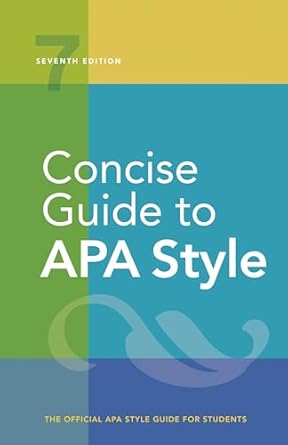[toc]
apa style guide formatting tips for perfect papers
Concise Guide to APA Style: 7th Edition (OFFICIAL)
Page 43 Review
DOCTYPE html>
APA Style Formatting: A Critical Analysis
Font and Typography in APA Style
The American Psychological Association (APA) style guide provides specific instructions on font and typography to ensure readability and consistency across academic papers.
This section delves into the nuances of these guidelines.
Recommended Fonts
APA recommends using legible and widely available fonts that include special characters.
According to the text, the following are acceptable:
- Sans serif fonts: “asans serif font such as 11-point Calibri, 11-point Arial, or 10-point Lucida Sans Unicode”
- Serif fonts: “aserif font such as 12-point Times New Roman, 11-point Georgia, or normal (10-point) Computer Modern (the latter is the default font for LaTeX).”
Justification for Font Choices
The selection of these fonts is not arbitrary.
The guide emphasizes that “they are legible and widely available and because they include special characters such as math symbols and Greek letters.” Legibility is crucial for readers to easily understand the content, while wide availability ensures that the document can be viewed correctly across different devices and systems.
Exceptions to the Rule
The APA style guide allows for exceptions to these rules under specific conditions:
- Figure Images: “Within figure images, use a sans serif font with a type size between 8 and 14 points.”
- Computer Code: “When presenting computer code, use a monospace font, such as 10-point Lucida Console or 10-point Courier New.”
- Footnotes: “When presenting a footnote in a page footer, the default footnote settings of your word-processing program are acceptable (e.g., 10-point font with single line spacing).”
Word Count vs.
Page Count
Due to the variability in space occupied by different fonts, APA recommends using word count rather than page count to measure paper length.
As the text notes, “Because different fonts take up different amounts of space on the page, we recommend using word count rather than page count to gauge paper length.” This ensures a more accurate and consistent measure of the paper’s content.
Special Characters
The guide dedicates a section to the use of special characters:
“Special characters are accented letters and other diacritical marks, Greek letters, math signs, and symbols.
Type special characters using the special character functions of your word-processing program or a plug-in such as MathType.
Characters that are not available should be presented as images.”
This emphasizes the importance of accurately representing specialized information without relying on workarounds that might compromise accessibility or readability.
Line Spacing
Double-spacing is a cornerstone of APA formatting.
The guide explicitly states:
“Double-space the entire paper, including the title page, abstract, text, headings, block quotations, reference list, table and figure notes, and appendices, with the following exceptions:”
Exceptions to Double-Spacing
Even with the stringent rule of double-spacing, there are some exceptions:
“Elements of the title page are double-spaced, and an additional double-spaced blank line appears between the title and byline.”
Conclusion
Adhering to APA style guidelines, particularly regarding font, special characters, and line spacing, is essential for producing clear, professional, and academically sound papers.
These guidelines promote consistency and enhance readability, facilitating effective communication of research findings.
Buy full ebook for only $18: https://www.lulu.com/shop/american-psychological-association/concise-guide-to-apa-style-7th-edition-official/ebook/product-rmzpq54.html?page=1&pageSize=4

